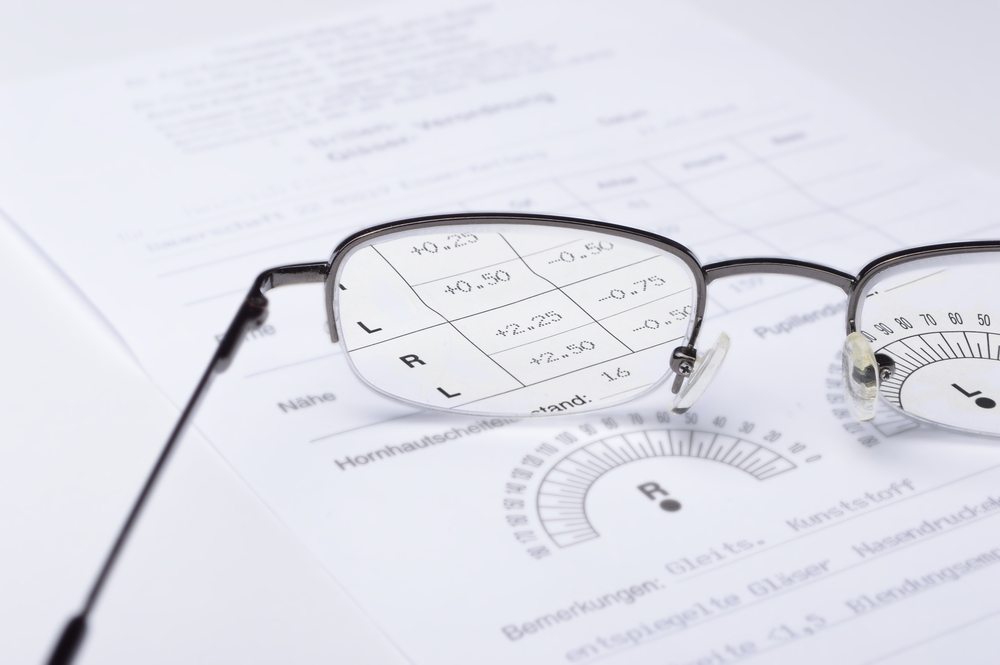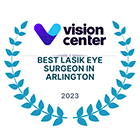
According to the Vision Council, a nonprofit trade association for optical equipment manufacturers and suppliers, just about 75% of adults use some sort of vision correction, meaning glasses or contacts. That’s a staggering number of adults requiring regular eye prescriptions.
If you’re new to the world of vision aids, or just curious about what all the information on your eye prescription is, then you're in luck. In today’s blog post, we’ll cover how prescriptions for glasses and contacts work, how you get an eye prescription, how to read your glasses or contacts prescription, and why your eye prescription might change.
How Do Glasses or Contact Prescriptions Work?
Many vision problems stem from an error in how light is focused on your retina. If the point at which the light is in focus falls before or after the back of your eye, then you’ll likely have slightly blurry vision. Visual aids like glasses and contact help improve your vision by correcting the focus of this light. In addition to correcting vision, getting glasses or contacts may also prevent headaches, eye strain, and any burning or stinging in your eyes.
Both glasses and contacts will alter how light enters your eye, allowing for clearer sight. However, prescriptions for glasses and contacts are not interchangeable. This is because contacts are directly on your eye, but glasses sit about 12 millimeters away. It doesn’t sound like a lot, but this is a huge distance when it comes to adjusting how light enters your cornea.
How Do I Get Prescription Glasses or Contacts?
If you’re experiencing anything like blurry vision or even eye strain and headaches, then you might be wondering how you can get a prescription for glasses or contacts. To start, you’ll need to make an appointment with an optometrist. It’s a good idea to get a general eye exam if you haven't been to an eye doctor recently. Be sure to tell your doctor about your interest in getting glasses and/or contacts, though, so they can specifically help you in this endeavor.
One thing we don’t want you to walk away from this blog post thinking is that receiving a prescription for glasses or contacts is a one-and-done thing. It’s a good practice to see your ophthalmologist once a year. These regular visits can help you manage changes in your prescription, which we discuss later in this post, as well as aid in early detection of some eye conditions.
How to Read Your Eye Prescription
Quick Reference Index
- ADD - Additional Lens Power. This number is seen on prescriptions for reading glasses or the lower portion of bifocal or progressive lenses.
- Axis - A number between 1 and 180 indicating where an astigmatism appears on your eye. Works together with cylinder (see below).
- BO - Base Out. Tells eyeglass manufacturers where to position the prism to correct double vision.
- BI - Base In. Tells eyeglass manufacturers where to position the prism to correct double vision.
- BU - Base Up. Tells eyeglass manufacturers where to position the prism to correct double vision.
- BD - Base Down. Tells eyeglass manufacturers where to position the prism to correct double vision.
- CYL - Cylinder, or the amount of astigmatism in your eye. Works together with the Axis (see above).
- DV - Distance Vision. Indicates nearsightedness or farsightedness.
- NV - Near vision, or the power that needed to make close activities like reading easier.
- OD - Oculus Dexter, the right eye.
- OU - Oculus uterque, both eyes.
- OS - Oculus sinister, the left eye.
- PD - Pupillary Distance.
- Monocular PD - the distance from your pupil to the middle of your nose.
- Binocular PD - the distance from one of your pupils to the other pupil.
- Prism - Indicates the amount of prismatic power your glasses need to correct for differences in the alignment of your eyes.
- SPH - Sphere, or the power of the lens that will correct your eyesight.
The numbers that follow one of the above abbreviations determine how strong your adjustment needs to be to correct your vision. The further away from zero, the stronger the correction. Farsighted individuals will see a plus (+) sign or no sign next to their numbers. Meanwhile, nearsighted people will see a minus (-) sign.
A contact lens prescription will have additional information on it, such as base curve, diameter, and expiration date. This extra information tells manufacturers the exact shape your contacts should follow, and tells you when you’ll have to renew your prescription.
Why Eye Prescriptions Change
We mentioned earlier how your prescription may change over time. It’s important to know that aging in and of itself won’t cause your eyesight to worsen. Getting older does mean you’re more likely to develop conditions that might affect your vision, though.
When we’re born, our eyes are only about 80% of the size of what our adult eyes will be. Simply growing into our adult bodies can lead to changes in vision. However, if your prescription changes drastically in a short amount of time, that likely means something else is going on, and you should have your ophthalmologist look into it.
Eye prescriptions can be confusing, but that’s only because they’re customized to you and your exact needs. Whether you need help decoding your current prescription or you’re thinking you need a new one, the eye doctors at Silk Vision & Surgical Center are ready to help you love what you see.











.png)
